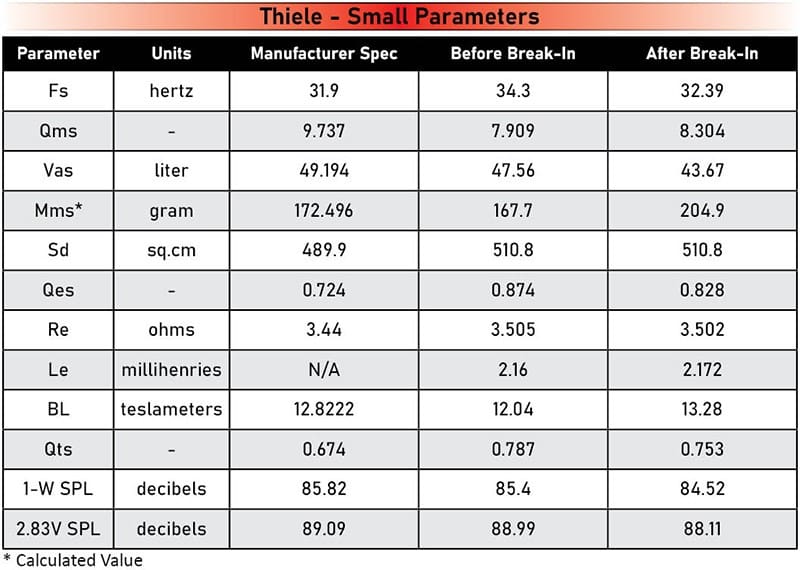ten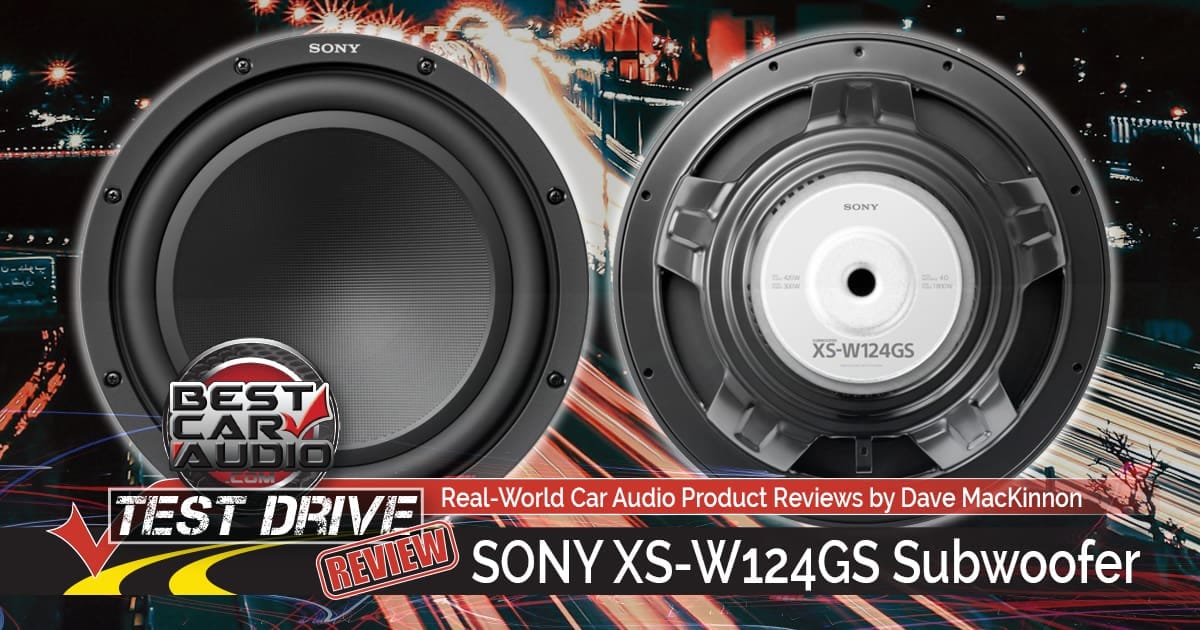
It’s hard to imagine anyone thinking that having a high-quality subwoofer in their car or truck wouldn’t enhance the overall driving experience. There’s something undeniably fun about adding some serious bass to your music. Sony has steadily released new car audio products over the past few years. Among those exciting introductions is the Sony XS-W124GS 12-inch car audio subwoofer. This subwoofer, designed with features borrowed from their flagship Mobile ES drivers, is geared toward delivering impressive bass for budget-conscious consumers. Let’s dive in and explore everything it has to offer!
Sony XS-W124GS Design and Chassis Features
Sony’s GS speakers and subwoofers include coaxial and component speakers and 10-inch and 12-inch subwoofers. The 12-inch XS-W124GS has a power handling rating of 420 watts, adhering to the CTA-2015 specification. The driver features a single-voice coil design with a nominal impedance of four ohms. As a result, it pairs perfectly with the Sony XM-GS100 amplifier. If you want even more bass, you can use two 12-inch subwoofers or two 10-inch XS-W104GS models without concerns about overpowering your setup.
The XS-W124GS is built around a five-spoke stamped steel basket. Sony went the extra mile by incorporating a supporting rib in the center of each spoke. This rib helps to add strength and rigidity, making the subwoofer more durable. Additionally, the edges of the spokes are rounded over to enhance stability, a feature not often found in more basic designs.
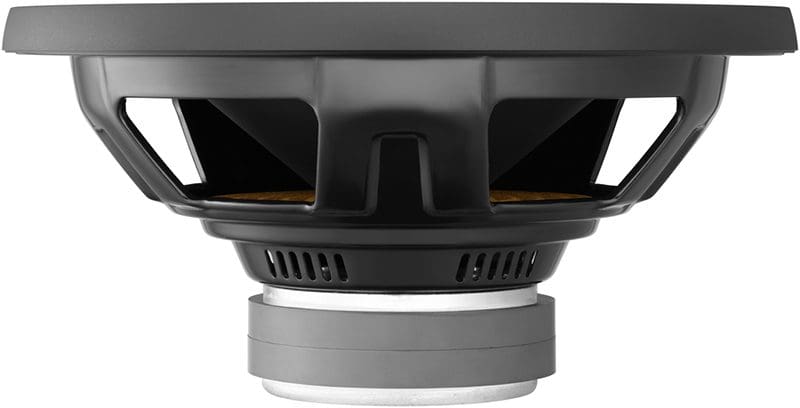
The basket design also includes a series of vents positioned beneath the spider mounting plateaus. These vents allow hot air to escape from the voice coil and the motor assembly, preventing overheating. Furthermore, they help eliminate air compression or rarefaction under the spiders as the cone moves during long-distance travel. This thoughtful design results in a noticeable reduction in power compression and an improvement in overall linearity.
Sony includes an injection-molded plastic trim ring to enhance the subwoofer’s aesthetics. Once the subwoofer is installed, this trim ring adds a polished look, a feature typically reserved for much more expensive subwoofers.
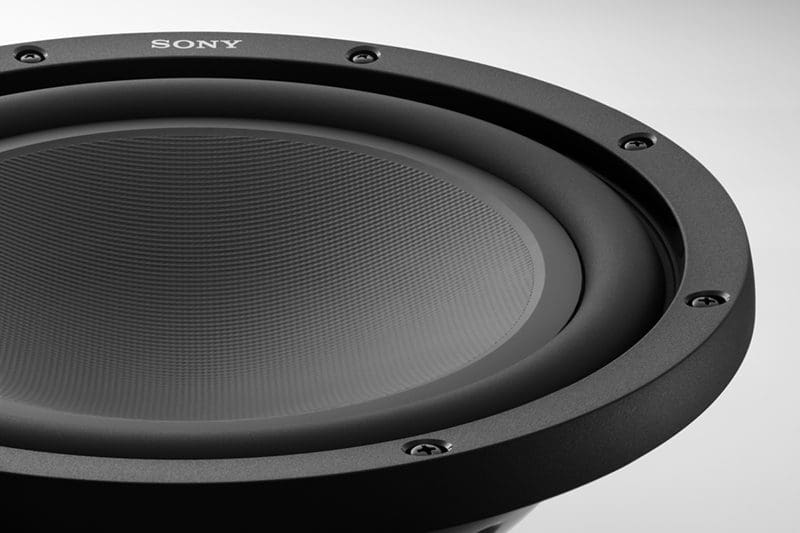
Motor and Soft Parts Features
At the heart of the XS-W124GS subwoofer lies a large 129 by 30.5-millimeter ceramic magnet. This magnet is sandwiched between the top plate and the T-yoke, both crucial components in the motor assembly. The T-yoke is engineered with a tapered vent that helps release pressure under the dust cap, further promoting airflow. This design aids in evacuating heat from the motor assembly, allowing for better performance during long listening sessions. The T-yoke extends slightly above the top plate, a design feature that enhances the voice coil’s position-based flux density, contributing to overall efficiency.
The subwoofer cone is constructed using pressed paper. This design strikes an excellent balance between strength and damping, ensuring the cone remains durable and effective in delivering sound. A large injection-molded polypropylene dust cap, with its parabolic shape, covers the cone and adds rigidity.
Sony uses a rubber surround to connect the cone to the basket. This flexible material is essential for car audio subwoofers, as foam-based surrounds tend to degrade quickly due to prolonged exposure to UV light. Rubber, however, offers superior durability in harsh environments.
The XS-W124GS features a voice coil wound to a four-ohm impedance. Sony attached a pair of long, flexible tinsel leads to the coil, which connects to reinforced tabs with quick connectors. For added stability, the driver uses a pair of progressive-rate spiders. These spiders help prevent the cone from rocking as it moves back and forth. To further improve performance, Sony uses two spider diameters. This approach helps distribute resonances more evenly, ensuring a smoother, more linear motion.
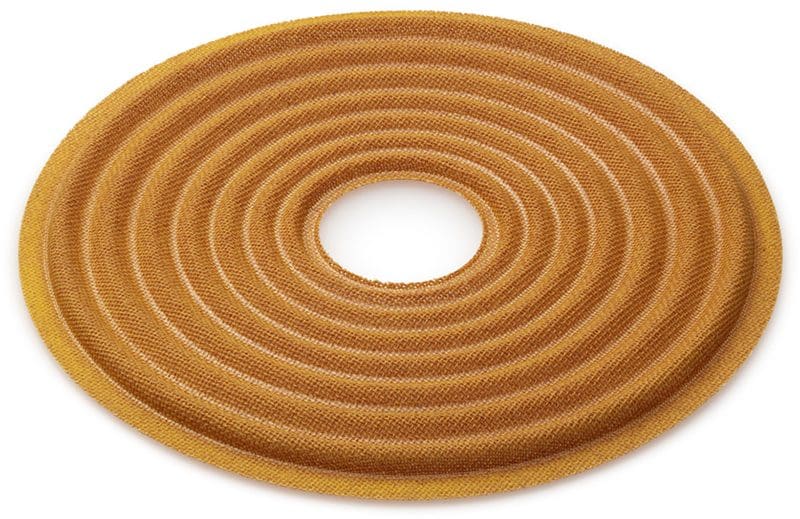
Thiele-Small Parameter Measurement
With the visual inspection complete, it was time to conduct a series of Thiele-Small parameter measurements on the Sony XS-W124GS. We always begin with “fresh out of the box” measurements before breaking the driver in. This initial testing helps determine whether a break-in period is necessary for consumers to achieve optimal performance from the subwoofer.
To break the driver in, we subjected it to a 16-volt RMS, 31-hertz signal for 10 hours. This process effectively exercises the suspension without causing any damage. Once the break-in period was complete, we allowed the driver to cool for several hours before repeating the electromechanical parameter measurements.
The results show that the values didn’t change drastically. The resonant frequency dropped slightly from 34.3 to 32.4 hertz, and the equivalent compliance increased from 47.6 to 43.7. The total Q (Qts) also decreased marginally, from 0.787 to 0.753. These post-break-in figures are well within the range of the factory specifications, which is a positive indication of the subwoofer’s performance. You aren’t going to notice a significant change as this driver softens. So, as they say, have at it!
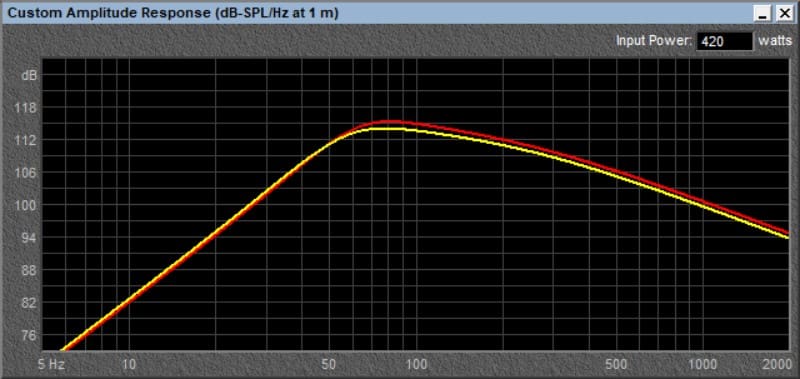
The XS-W124GS’s suspension is moderately stiff, contributing to the slightly higher total Q (Qts) of 0.753. This stiffness makes sense for a driver intended for moderate-power applications. A higher Q adds some efficiency to the design, making it ideal for this subwoofer’s target market. While you could technically use this driver in an infinite baffle setup, keeping the power under 200 watts and implementing an infrasonic filter set at 35 hertz for optimal results is crucial.
Enclosure Simulations and Observations
Sony’s owner’s manual recommends using a sealed enclosure with a net volume of 0.91 cubic feet for the XS-W124GS. The driver achieves an F3 frequency of 42.1 hertz in this configuration and a total Q (Qtc) of 1.049. While this is slightly above the ideal range, it still sounds acceptable. We generally prefer to keep Qtc under 1, but Sony’s engineers knew what they were doing.
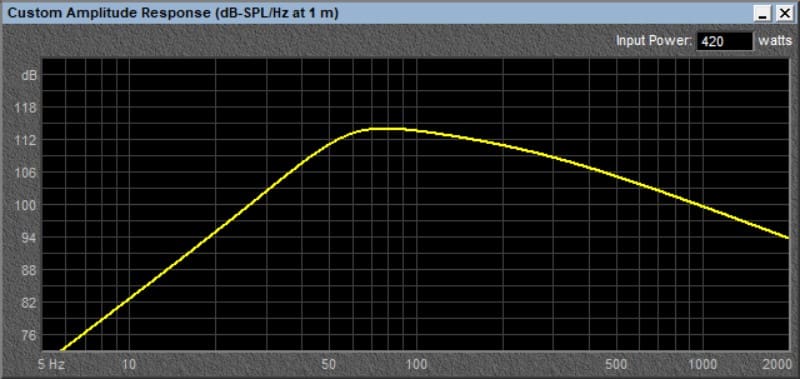
With the subwoofer powered at the CTA-2015-compliant rating of 420 watts, the driver doesn’t significantly exceed its 7.9-millimeter Xmax excursion rating. Anything larger wouldn’t provide adequate cone control. We’d recommend stuffing the enclosure with Dacron to enhance the sound even further. This would help slightly lower the Q, which might suit some listeners’ preferences.
For those interested in a bass reflex (ported or vented) enclosure, Sony suggests a design with an internal volume of 1.16 cubic feet with a tuning frequency of 37.8 hertz. This setup increases efficiency by over 3 dB across most of the listening range. If your system is short on power, but you still want to maximize output, this is the enclosure design to choose.
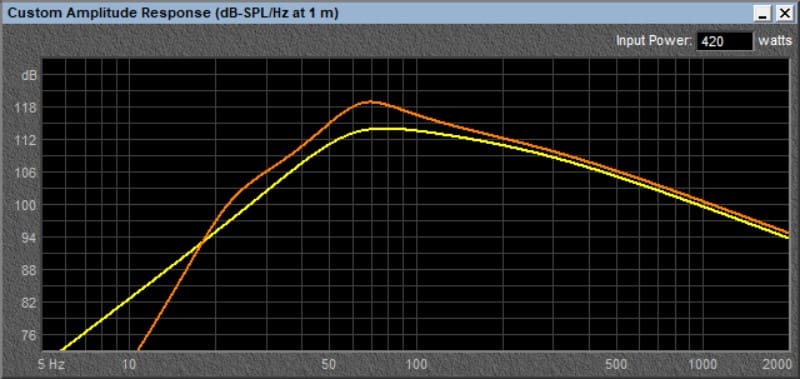
Regarding the predicted performance, the high Q factor provides a noticeable boost in the 50 to 70-hertz range. This gives the subwoofer a solid “kick” with only moderate power, delivering a punchy bass response. Let’s move on to the lab test and see how it performs.
Listen Test Configuration
To properly audition the XS-W124GS, we installed it in a bass reflex enclosure we already had in the lab. This enclosure has a net volume of 1.43 cubic feet and is tuned to 35 hertz. The larger size reduces the peak at 60 hertz and adds more output around 40 hertz. We simulated the driver excursion in this application and extracted a few more hertz of low-frequency output before requiring an infrasonic filter. Although the difference between enclosure designs isn’t enormous, the extra low-frequency extension makes a difference in the lab, especially since we don’t have the transfer function benefit present in a car, truck, or SUV.
The auditioning setup includes a now-veteran CD player, a high-end, high-bias class-AB amplifier powering a pair of 2.5-way bookshelf speakers, and an 800-watt Class-D monoblock amplifier dedicated to the subwoofer. The source unit manages the crossovers, which we set to -18 dB/octave slopes at 80 hertz. Before starting the listening tests, we verified the acoustic frequency response to ensure proper polarity at the crossover point.
Auditioning the Sony XS-W124GS
The first track we used to test the subwoofer was Angel by Massive Attack. This song features a powerful 34-hertz kick in the bass line, and the Sony XS-W124GS handled it admirably. The subwoofer maintained clarity, delivering the bass note without blurring it into the higher frequencies. While the high-Q design added some extra output, around 65 hertz, this resonance boosted the dynamics, making the track more fun, even if it wasn’t perfectly crisp and clean.

Next, we played Sirius by The Alan Parsons Project. This track starts with synthesizer sounds in the left channel, while the bass is on the right. As the song progresses, the bass moves to the center of the soundstage. The XS-W124GS did a commendable job of tracking the bass without introducing harmonic distortion that would pull the bass image toward the driver. This accuracy speaks to the quality of the subwoofer’s design.
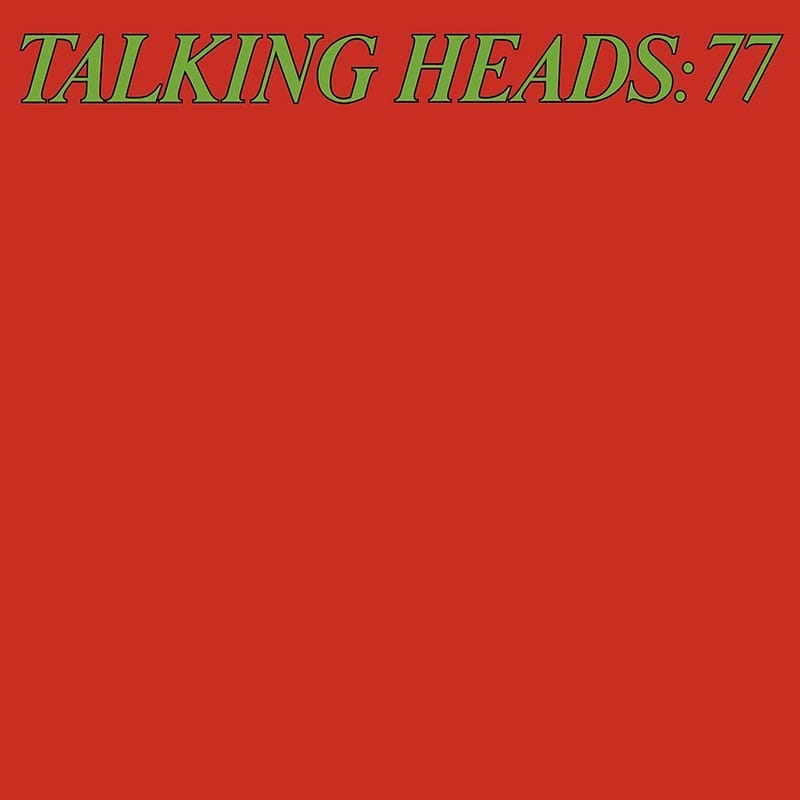
We finished the listening session with Psycho Killer by the Talking Heads and Them Changes by Thundercat. In these tracks, we focused on the dynamics of Tina Weymouth’s bass guitar, Chris Frantz’s drums, and Stephen Lee Bruner’s (Thundercat) bass playing. While the XS-W124GS’s high-Q design added some overhang to the upper bass notes, it didn’t muddy the sound to the point where the notes blended together. In fact, it handled the midbass frequencies near the crossover point well. The subwoofer also avoided the pitfalls of some high-mass cone designs, which often struggle with midbass reproduction. Interestingly, we noted that the first significant cone break-up (resonance) occurred above 1 kHz, which is quite impressive.
Final Thoughts on the Sony XS-W124GS 12-inch Car Audio Subwoofer
The Sony XS-W124GS delivers a solid performance. While it may not be as tight or as dynamic as Sony’s higher-end Mobile ES subwoofers, it provides excellent output in the target frequency range, thanks to its high Q. If you’re looking for a budget-friendly subwoofer that can add significant punch to your car’s audio system, the XS-W124GS is an excellent option. It doesn’t require a massive enclosure to produce powerful bass, making it suitable for a wide range of installations. Sony also offers several amplifiers that pair well with this subwoofer, ensuring you can get the most out of your system. For more information, visit Sony’s website or use their dealer locator to find a local shop that can help design, integrate, and configure a Sony audio system to make every trip more enjoyable.
